Control effectiveness lessons learned
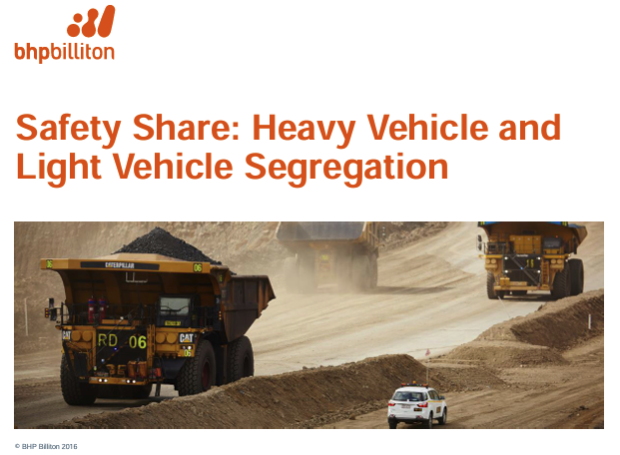
Safety share: Heavy vehicle and light vehicle segregation
Light vehicles and mobile equipment don’t mix. Across industry, history repeats itself with near misses and fatalities associated with light vehicles and mobile equipment coming together for a variety of reasons – driver distraction, limited visibility, fatigue, environmental conditions and so on.
Implementing physical controls that provide a higher level of protection to employees has been a challenge.
This presentation has been developed to share BHP Billiton Mitsubishi Alliance’s (BMA) approach to minimise mining vehicle interactions by segregating heavy vehicle (HV) and light vehicle (LV) activity, with a view to improving safety in the industry.
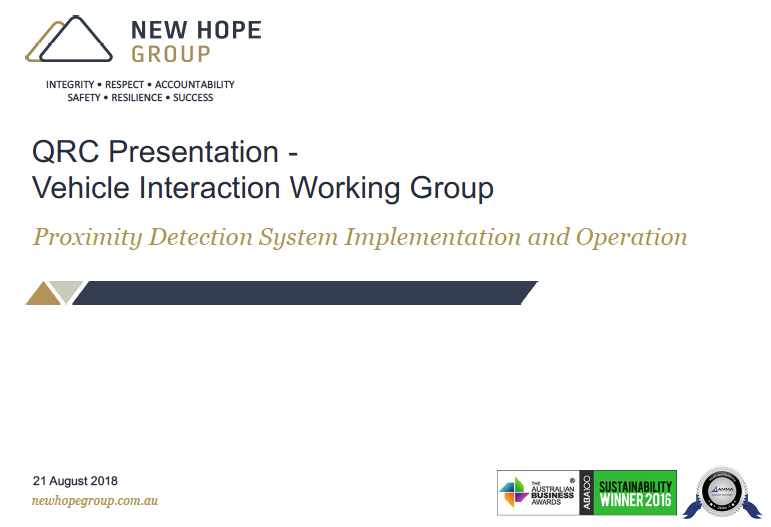
Proximity detection system implementation and operation
Facts:
- Vehicle incidents have resulted in multiple industry fatalities
- Vehicle interaction is recognised within New Hope Group operations as a ‘Principal Hazard’
- Proximity detection has been recognised by the Queensland Coal Mining Regulator as a key tool in managing and improving vehicle interactions on mine sites
Previous industry perception was that Proximity Detection/Collision Avoidance was on a path that may have resulted in the technology being regulated.
New Hope Group identified value and opportunity in proximity detection technology and decided to evaluate potential options with a view to guiding and proactively managing the outcomes.
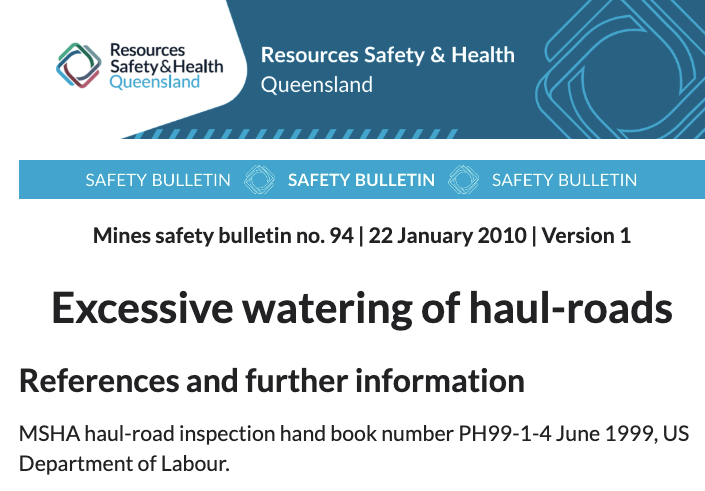
Excessive watering of haul-roads
The number of incidents on haul-roads relating to over-watering is increasing. Most occur on ramps, (see location pie chart in Figure 1), and result in vehicle collisions with safety berms (bund walls).
While most water trucks have been fitted with spot sprays to alleviate over-watering, greater attention is needed to other causal factors, including steep grades, limited site distance, narrowing road ways, intersection design and/or slippery road surfaces. Figure 2 shows vehicle actions as a result of an over-watering incident and Figure 3 represents the types of vehicles involved in such incidents.
Road construction and road surface can contribute to the problem. A clay surface can lose up to 50% of its coefficient of friction through the application of water. For example, the tertiary weathered overburden clays have half the coefficient of friction of some siltstones and sandstones.
It is important that vehicle drivers adjust their speed to suit the road conditions, as coefficients of friction for road surfaces vary. The application of road surface gravel or crushed stone offers good traction values in both wet and dry conditions.
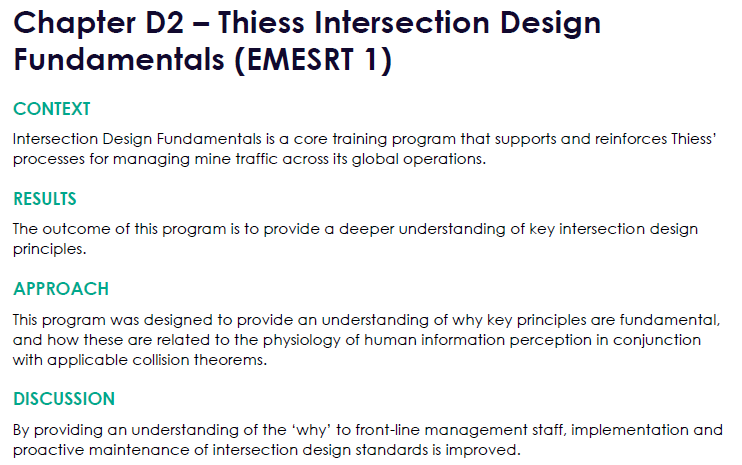
Intersection design fundamentals (EMESRT 1)
Intersection Design Fundamentals is a core training program that supports and reinforces Thiess’ processes for managing mine traffic across its global operations.
The outcome of the program is to provide a deeper understanding of key intersection design principles.
The program was designed to provide an understanding of why key principles are fundamentals, and how these are related to the physiology of human information perception in conjunction with applicable collision theorems.
Informative incident investigations
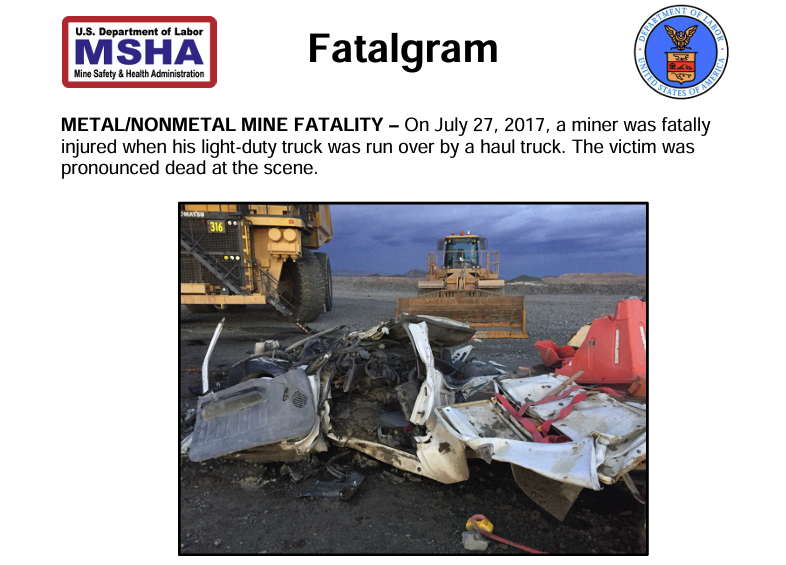
Investigation report: Fatal powered haulage accident - Asarco LLC, Arizona
On July 27, 2017, Gabriel Antonio Benitez, Heavy Truck Driver, age 41, was fatally injured when he was crushed inside his parked pickup truck by a 320-ton haul truck.
The accident occurred because mine management failed to ensure dump sites were adequately illuminated and failed to establish rules governing right-of-way and traffic control at dump sites.

Resources Regulator. Investigation information release: Worker struck by light vehicle at quarry
A worker suffered fatal injuries when he was struck by a light vehicle at West Wyalong Quarry on 24 May 2021.
A worker suffered fatal injuries when he was struck by a light vehicle. The worker was kneeling down to retrieve items, which had been earlier dropped on the ground, when the driver of the light vehicle performed a left-hand U-turn. The driver did not see the worker and the front passenger side of the vehicle struck the worker. First aid was administered by other workers and later by NSW Ambulance, however, attempts to resuscitate the worker were unsuccessful. The NSW Resources Regulator has commenced an investigation into the incident.

Resources Regulator. Learning from investigations: Fatal collision between dozer and light vehicle
On 12 August 2019, a 47-year old contractor, Mr Andrew Bray, was fatally injured when a Caterpillar D10T dozer (DZ 813) collided with his light vehicle (LV 778). The incident occurred in an active overburden tip head (Western Tip Head) at the Snapper Mineral Sands Mine located approximately 40 kilometres west of Pooncarie, in southwest New South Wales.
At approximately 4:30 pm, while at the Western Tip Head, the DZ 813 operator made a UHF radio communication requesting that Mr Bray retrieve his water bottle from the crib room. At around 4:45 pm LV 778 arrived at the tip head and, shortly after, contacted DZ 813 via radio communication arranging to meet at a light tower located at the tip head. It was common practice for heavy and light vehicles to use the lighting towers as park-up areas and meeting points.
The DZ 813 operator stopped the dozer, lowered its implements and, after further communication with Mr Bray, waited while he attended to another matter. Shortly after the DZ 813 operator received further radio communication from Mr Bray stating words to the effect “track back to the light tower”. Before moving off, the DZ 813 operator checked his left, right and rear windows and rear-view mirror at which time he did not see the light vehicle. DZ 813 then reversed straight back approximately 10-15 metres before impacting with LV 778.

Resources Regulator. Investigation report: Near collision between haul truck and light vehicle at Maules Creek Mine
A loaded haul truck narrowly avoided a collision with a light vehicle containing 2 occupants that had stopped at an intersection at 1.52pm on 6 December 2021. The incident occurred at Maules Creek Mine near Narrabri.
The light vehicle had turned onto an access road and travelled towards a T-intersection between that road (through road) and ramp 6 (the terminating road). A short time later, the haul truck entered the access road at the same point as the light vehicle and began travelling towards the intersection. The haul truck operator did not see the light vehicle ahead of him.
There was a sweeping left-hand bend on the access road before the intersection. The bend was less than 100 metres from the intersection. A windrow was built on the left side of the road on the bend. It ranged in height between 2.8 and 3.6 metres.
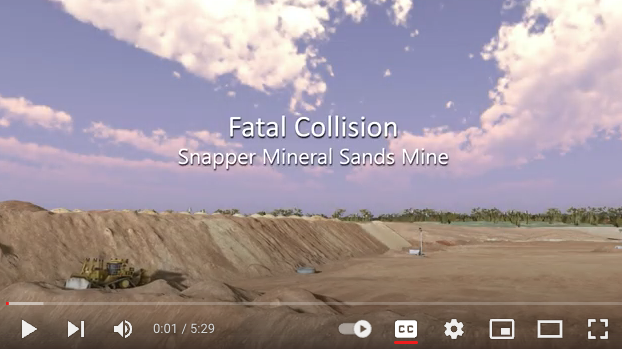
Resources Regulator: Reducing adverse vehicle interactions
On 30 November 2023, an operator sustained hand fractures and a head laceration that required 52 stitches when two haul trucks collided at Mt Arthur Coal Mine in Muswellbrook.
Vehicle incidents were the second-most common cause of fatalities at NSW mine sites over the past decade.
The NSW Resources Regulator has produced this video to raise awareness of what can go wrong in a split second, and to help mine operators reduce the number of collisions and near-misses to ensure everyone gets home safely.

Resources Regulator: Targeted awareness campaign 2023: vehicle interaction
The NSW Resources Regulator has produced this video resource following a targeted awareness campaign about vehicle interactions at surface mine sites in the NSW mining industry.
The regulator recommends the video be used for training purposes and tool box talks to encourage discussion between workers and supervisors at your mine site.
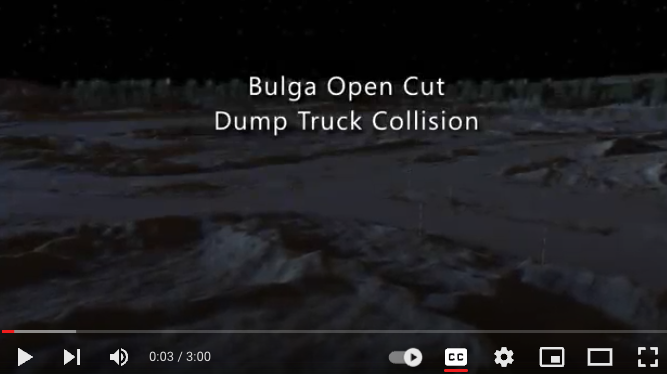
Resources Regulator: Bulga open cut dump truck collision
At about 3.30am on Monday 23 July 2018, an unloaded Caterpillar 793D dump truck (DT139) was being driven along a haul road at the East Pit of Bulga Open Cut Mine. As the truck approached an intersection, the driver saw a grader, dump truck and water cart at the intersection. The truck driver stopped the vehicle at the intersection to give way to the grader, dump truck and water cart in accordance with the mine’s road rules.
At that time, an unloaded Caterpillar 793C dump truck (DT122) was being driven along the same haul road behind the other dump truck. The driver of DT122 saw DT139 coming to a stop. He lifted his foot from the accelerator to allow his truck to slow with the intention of stopping behind DT139. At this time, the driver of DT122 became unresponsive. It is possible that the driver suffered a micro-sleep or a medical episode that rendered the driver unresponsive.
The front of DT122 hit the rear of DT139. Vehicle data records show that DT122 was travelling at 41 km/h in sixth (top) gear at the time of the collision. There is no evidence on the plant data records to support any action on steering, emergency braking or application of retarder by the driver.
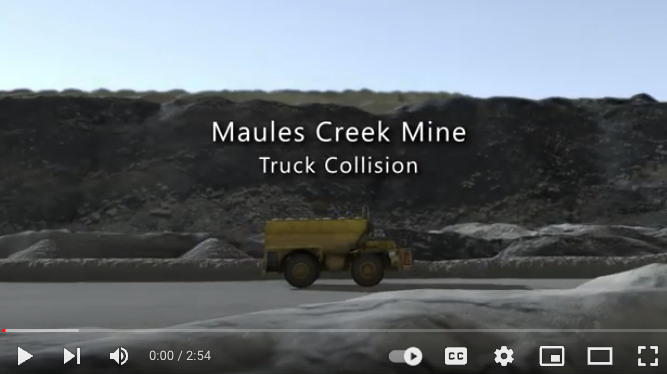
Resources Regulator: Maules Creek mine truck collision
About 8 am on 21 April 2018, a service truck operator suffered serious injuries when the service truck he was driving collided with a haul truck at a four-way intersection at the Maules Creek Mine. The operator of the haul truck was not physically injured.
The intersection road signs were changed during the day shift the day before the incident, to allow haul trucks to drive straight through the intersection from the mine’s production area. To give effect to this change, the intersection’s stop signs were relocated to the eastern haul road, requiring traffic travelling east and west to stop and give way to other traffic.
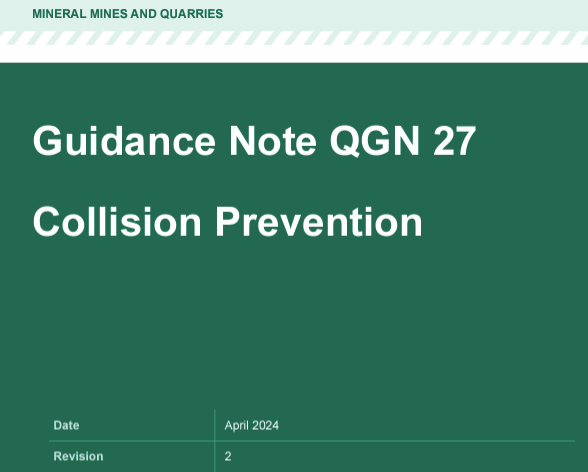
Guidance Note QGN 27: Collision prevention revision 2 published April 2024
This Guidance Note applies to surface and underground operations and is designed to assist in the identification of hazards, and the development and implementation of controls, to manage the risk to persons from collisions. This includes collisions between vehicles, vehicles and persons, and vehicles and infrastructure.
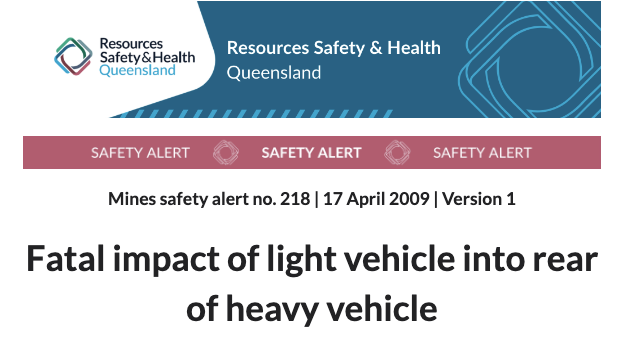
Fatal impact of light vehicle into rear of heavy vehicle
A contractor’s employee was fatally injured at an open cut coal mine when he drove his utility into the rear of a large, empty, low loader travelling slowly in the same direction. The low loader weighs some 200 tonnes and is used to transport heavy equipment such as dozers and excavators.
The low loader driver was unaware of the collision and continued on to his destination. The utility cab was crushed beneath a projecting ‘tow hitch’ at the rear of the low loader.
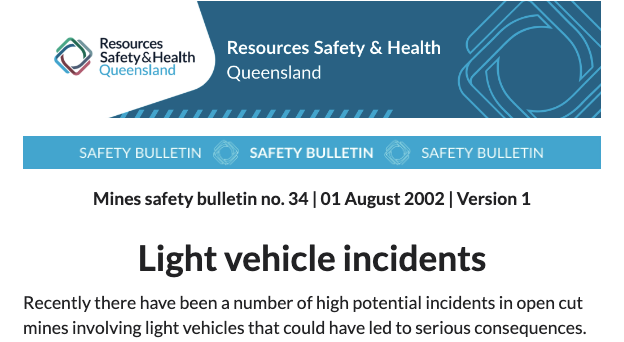
Light vehicle incidents
Recently there have been a number of high potential incidents in open cut mines involving light vehicles that could have led to serious consequences. In the last five years, 30 incidents have been reported from 14 open cut coalmines in Queensland’s central coalfield region. It is to be noted that as there was no legal requirement to report all types of high potential incidents before the introduction of Coal Mining Safety and Health Act 1999, there could possibly be more occurrences of incidents than have been advised to the inspectorate. For example, the average number of incidents has increased to 9 from 2 for the year immediately after the implementation of the new Coal Mining Safety and Health Act.
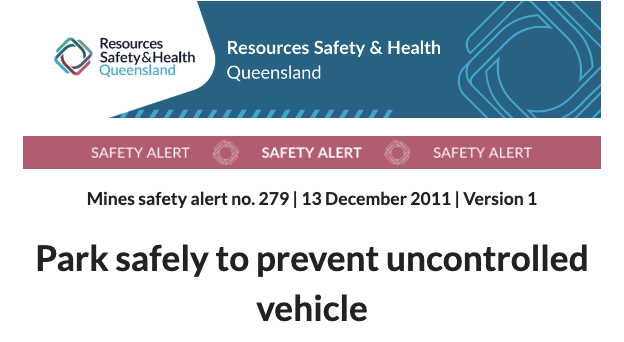
Park safely to prevent uncontrolled vehicle
A coal exploration drilling rig and support vehicles were travelling in convoy through level terrain between drill sites. There were cattle in the immediate area.
An automatic Toyota Hilux twin-cab vehicle in the convoy had just passed through an open gate when a nearby cow tried to follow the vehicle through. To prevent the animal’s escape, the driver pushed the gear shift forward, intending to park the Hilux, and jumped out to block the animal.
Once the driver was out of the cab, the vehicle started to creep back toward the gate opening. His immediate reaction was to push against the tailgate, calling the driver of an accompanying vehicle to help stop the vehicle. He had to hold the moving Hilux for about a minute before help arrived.
Although no one was injured, there was potential for the runaway vehicle hitting, running over or pinning a person against a stationary object, such as a gate or fence.
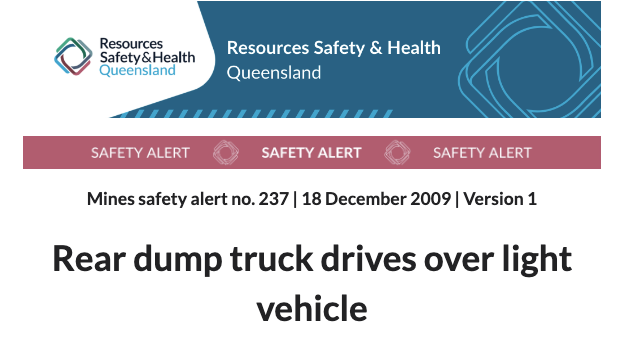
Rear dump truck drives over light vehicle
During dayshift, a loaded Cat 785D Rear Dump Truck was travelling off a bench towards the intersection with the ramp leading out of the pit. At the same time, a supervisor was travelling down the ramp in a Toyota Troop Carrier. The supervisor stopped at the intersection to let the truck exit the bench and to turn right onto the ramp. As the truck entered the ramp, the right front wheel (off driver’s side) ran over the bonnet of the troop carrier on the driver’s side. The truck continued up the ramp and only stopped after the supervisor contacted the truck driver via the two way radio. Nobody was injured in this incident.
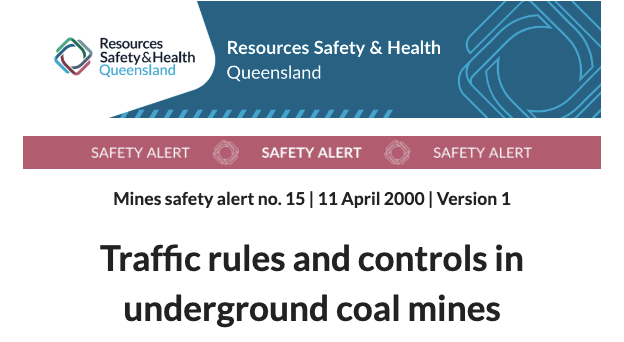
Traffic rules and controls in underground coal mines
A personnel carrier travelling inbye, from the pit bottom area, on a main road collided with the bucket of a Load-Haul-Dump (LHD) that was crossing the road at a cut through. The LHD operator had stopped and sounded the horn but the personnel in the carrier did not hear the horn or see the lights of the LHD and the LHD driver did not see the lights of the personnel carrier. The bucket of the LHD rode along the front nearside mudguard and header tank assembly and into the front passenger compartment causing a hairline fracture of the pelvic bone of the passenger. This incident had the potential for a more serious injury.
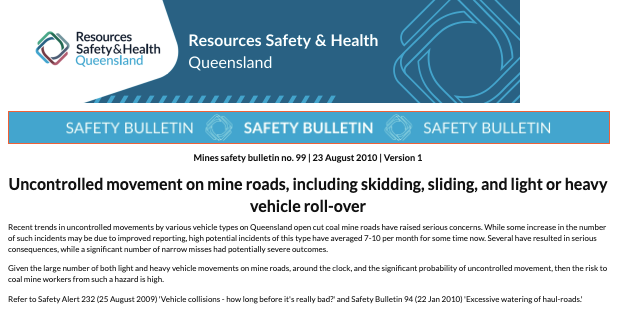
Uncontrolled movement on mine roads, including skidding, sliding, and light or heavy vehicle roll-over
Recent trends in uncontrolled movements by various vehicle types on Queensland open cut coal mine roads have raised serious concerns. While some increase in the number of such incidents may be due to improved reporting, high potential incidents of this type have averaged 7-10 per month for some time now. Several have resulted in serious consequences, while a significant number of narrow misses had potentially severe outcomes.
Given the large number of both light and heavy vehicle movements on mine roads, around the clock, and the significant probability of uncontrolled movement, then the risk to coal mine workers from such a hazard is high.
Refer to Safety Alert 232 (25 August 2009) ‘Vehicle collisions – how long before it’s really bad?’ and Safety Bulletin 94 (22 Jan 2010) ‘Excessive watering of haul-roads.’

